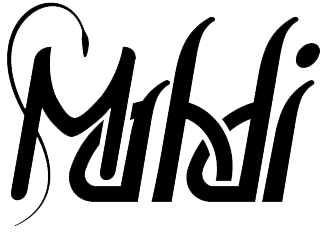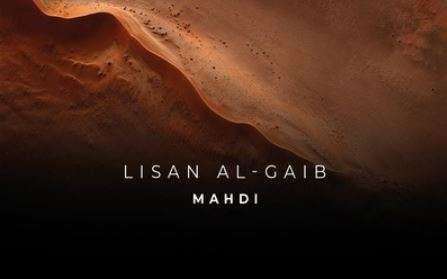
Every civilization has its own features, and they all leave their unique traces upon history. However, the Islamic civilization of Andalusia stands out from all other civilizations in its numerous exceptional features.
During the period typically described by Western historians as the “Dark Ages,” al-Andalus was a shining star of the epoch, and it played a leading role in the development of European culture. Its cities achieved the pinnacle of the concepts of innovation, culture and civilization. While Europe was engulfed in darkness after the sun had set, the streets of Córdoba in al-Andalus were lit by lamps 24 hours a day. While Europe was covered in dirt and mud, Córdoba was completely paved and had over a thousand public bathhouses. While the citizens of Paris and London were living in huts by the river, Córdoba had virtually all of the modern comforts of a city. The city was the embodiment of an enlightened cultural center, boasting a hospital, library and schools. Córdoba’s library, with 600,000 bound handwritten books, was large enough to rival even today’s major libraries. While the nobles of Europe couldn’t even write their own names, in Córdoba the children were going to school.[1]
The Spanish Peninsula learned of Islam a century after the Hegira. After Tariq ibn Ziyad’s coming to Spain from North Africa, Muslims built one of the most glorious civilizations of history. With the dark mentality of the Middle Ages holding sway everywhere, and millions wiped out by plague and the hundreds years’ wars with whole nations pitted against each other; the honorable face of humanity was apparent in the civilization of al-Andalus.
For eight centuries, al-Andalus was the center of Islamic civilization in Europe. Amongst other things, Europe benefitted from the developments that took place in medicine, science, education and architecture thanks to the Islamic civilization. Many historians consider that the starting point of the European Renaissance was the civilization of al-Andalus and that Córdoba was “a city of a civilization at its apex.” There is complete consensus that the scientific developments that took place in Medieval Europe were due to the work of Islamic scholars. [2]
One of the most beautiful examples of the Andalusian civilization is the Alhambra, which was also wonderfully in harmony with nature. The palace featured supremely detailed design and extremely unique ornamentation. In the living quarters of al-Andalus greenery and water were perfectly in harmony with one another, while the palace had features similar to environment friendly green buildings of the present day.
Al-Andalus’ wonderful city architecture also had features for protecting nature. The city was full of gardens and ponds, which were irrigated by water carried through watermills. The gardens were modeled on descriptions of paradise in the Qur’an, and made the city eye-catchingly magnificent.
In addition to its beauty and magnificence, al-Andalus developed into a center of science and medicine. The newest discoveries of Islamic scientists in astronomy and mathematics soon reached the Iberian Peninsula. Muslim physicians were performing operations that resembled the delicate surgical procedures performed today. Famous scientists in the Western world such as Newton, Descartes and Fibonacci referenced books written in the Muslim world in their works. The works of Ibn Rushd (Averroes), which was brought to Italy thanks to Michael Scot, played a significant part in the development of the European Renaissance.
European fashion also has its roots in al-Andalus. Italian tailors became renowned for their use of fabric from the Islamic world. The fabric weaved on the looms of the Muslim world was far superior in quality to that weaved in Europe. Ziryab, the Muslim musician, brought the refined culture of changing clothes according to the seasons and the time of day to al-Andalus. Personal hygiene products such as toothpaste and deodorant also came first to Iberia, and then to Europe, via Ziryab.
Al-Andalus was a social state in which Muslims, Christians and Jews lived comfortably together. Many works revealed the talent of artists of the three religions. The mosques of the period contained the work of master Jewish stonemasons as well as Christian carpenters.
In 800 years of the Andalusian Islamic civilization, 80,000 palaces and mansions, 80 schools, 600 mosques and 600 public houses were constructed. However, only a few dozens of these great works remain. Of those remaining, the Great Mosque of Córdoba was converted into a cathedral. An architectural masterpiece, the Alcázar of Córdoba was used by Queen Isabella and King Ferdinand as a tribunal of the Inquisition, while Andalusian’s Arab baths were converted into torture chambers.
After the Muslims, Christian rule dominated the peninsula, and the entire Jewish community was expelled from the region, and their property was confiscated. As Spanish explorers reached the Americas, their soldiers massacred the natives, the Incas and the Aztecs in particular, and sent the spoils back to Spain.
In short, Muslim rule made the region Europe’s richest and most developed lands. Science, culture and art were greatly advanced, and the people experienced significant development. In addition, al-Andalus showed that the relationships between Muslims and the Western world could continue smoothly through the values of brotherhood, understanding, reconciliation and solidarity that Islam brings with it. All of these make al-Andalus, in many ways, a model for today’s world. There is no doubt that the world today needs a similar civilizational breakthrough as was provided by al-Andalus. Muslims are again needed to become the leaders in the building of a new civilization of democracy, modernity and beauty, the like of which the world has never seen. The foundation of this breakthrough is inherent in the Islamic religion. In order to reach this lofty goal, it is sufficient to remove the innovations that were subsequently added to our religion and return to the original principles of the Qur’an. The Muslim world must take the pleasant culture, excitement and enthusiasm that was seen in the glorious first years of Islam as example and recreate a new Golden Age in the 21st Century.
[1] Ahmad Thomson, Endülüs’te Müslümanlar (The Muslims in Andalusia).
[2] (http://www.historyonthenet.com/blog/six-important-islamic-advances-in-medieval-medicine)
Adnan Oktar's piece in New Straits Times:
http://www.nst.com.my/news/2016/07/159048/lessons-al-andalus

